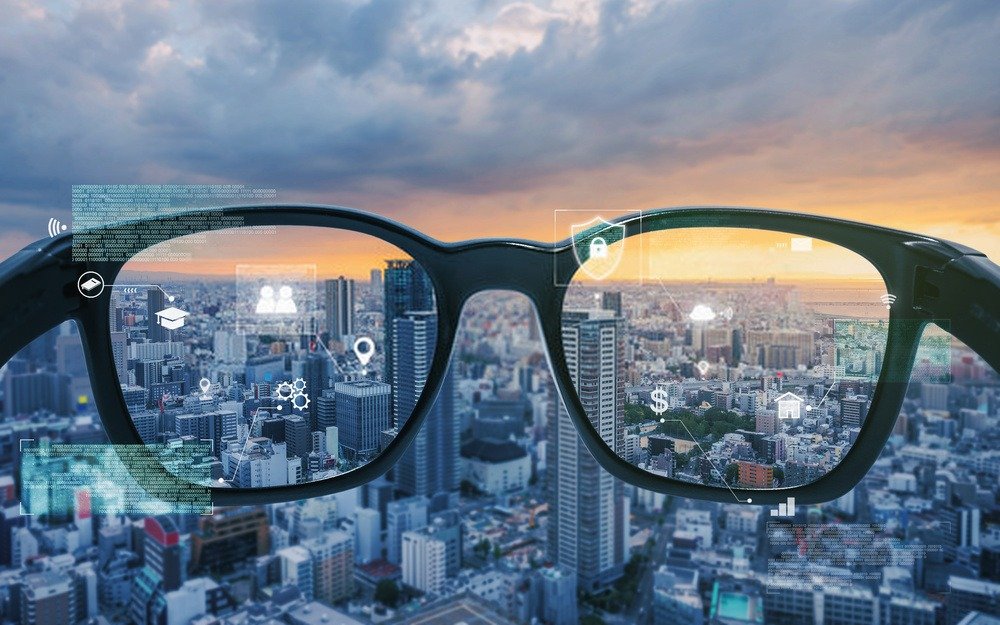Still belonging to the realm of science fiction, barely 10 years ago, augmented reality glasses may be part of our daily lives in 10 years.
What is augmented reality (LRA)?
Let us briefly define the principle of augmented reality. AR is a concept that includes all the techniques whose objective is to enrich our environment with contextual information.

The glasses then offer the possibility for the wearer to see the virtual superimposed on the real world. Never has the virtual world so affected the field of vision of the user of virtual technologies.
However, this technology should not be confused with virtual reality glasses which almost “remove” reality in favor of the virtual, these glasses being increasingly used in the field of video games or even architecture.
The general public failure of Google Glass and its revival by the professional world
At the beginning of the 2010s, Google wanted to be a pioneer in the field by wanting to launch Google Glass. The objective was to make LRAs easily accessible to a wide audience, unfortunately the project as it was did not come to fruition. And was discontinued in 2015.
However, in 2017, he experienced a rebirth through another route: the professional route. Indeed, Google Glass was sold to professionals: doctors, surgeons, industrial engineers, etc. Moreover, they all use it in their professions.
Augmented reality glasses and the world of work.

If general public sales were a failure, this is not at all the case in the world of work. Thus, augmented reality glasses are increasingly used in the world of work such as industry.
According to an article published on the LCI website on December 14, 2020, taken from the report: Innovation: when reality bursts into the industry. The report shows how engineers, by superimposing a virtual model on the real one through glasses, know whether the part analyzed is defective or not.
Thanks to this system, inspectors save time during various checks while losing nothing in terms of efficiency.
In the nuclear field, this technology is combined with that of the robot. With the combination of the two, engineers can safely control highly radioactive rooms. How ? Engineers control a small robot tank through glasses, allowing the robot to be guided during the maneuver.
As in the world of medicine, augmented reality has made it possible to compensate for the defects of the human eye during surgeries. Indeed, during an operation, the surgeon cannot perceive everything, but augmented reality offers him the possibility of perceiving details previously invisible to his eyes, thus gaining precision and reducing the risk of medical error.
Glasses designed primarily for professionals.

In addition to Google, other suppliers have appeared on the market to also offer glasses suitable for professionals. Thus, the Vuzix company has become one of the market leaders in augmented reality glasses.
How did she manage to find accommodation in this place? The company, founded in 1997, was a pioneer in this field, but the lack of outlets meant that the company ultimately remained in the background before being put forward thanks to the boom in the use of glasses.
Today, the company has almost specialized in this field and offers glasses perfectly adapted to the needs of professionals: optical screen with high resolution, expanded field of vision, etc. As demonstrated by one of its latest jewels the : Vuzix M4000 .
Use increasingly extended to the general public
Indeed, although we are not yet in general public use, augmented reality glasses are becoming more and more widespread. Indeed, recently, the artistic field has been using this new technology to enrich the viewer's experience. Particularly for the deaf and hard of hearing by displaying subtitles through glasses.
Conclusion
Thus, thanks to its system of superimposing the virtual on the real, augmented reality glasses have found their place in today's world. If its development was slow at first, it tends to establish itself slowly as its usefulness is undeniable in the world of work.




